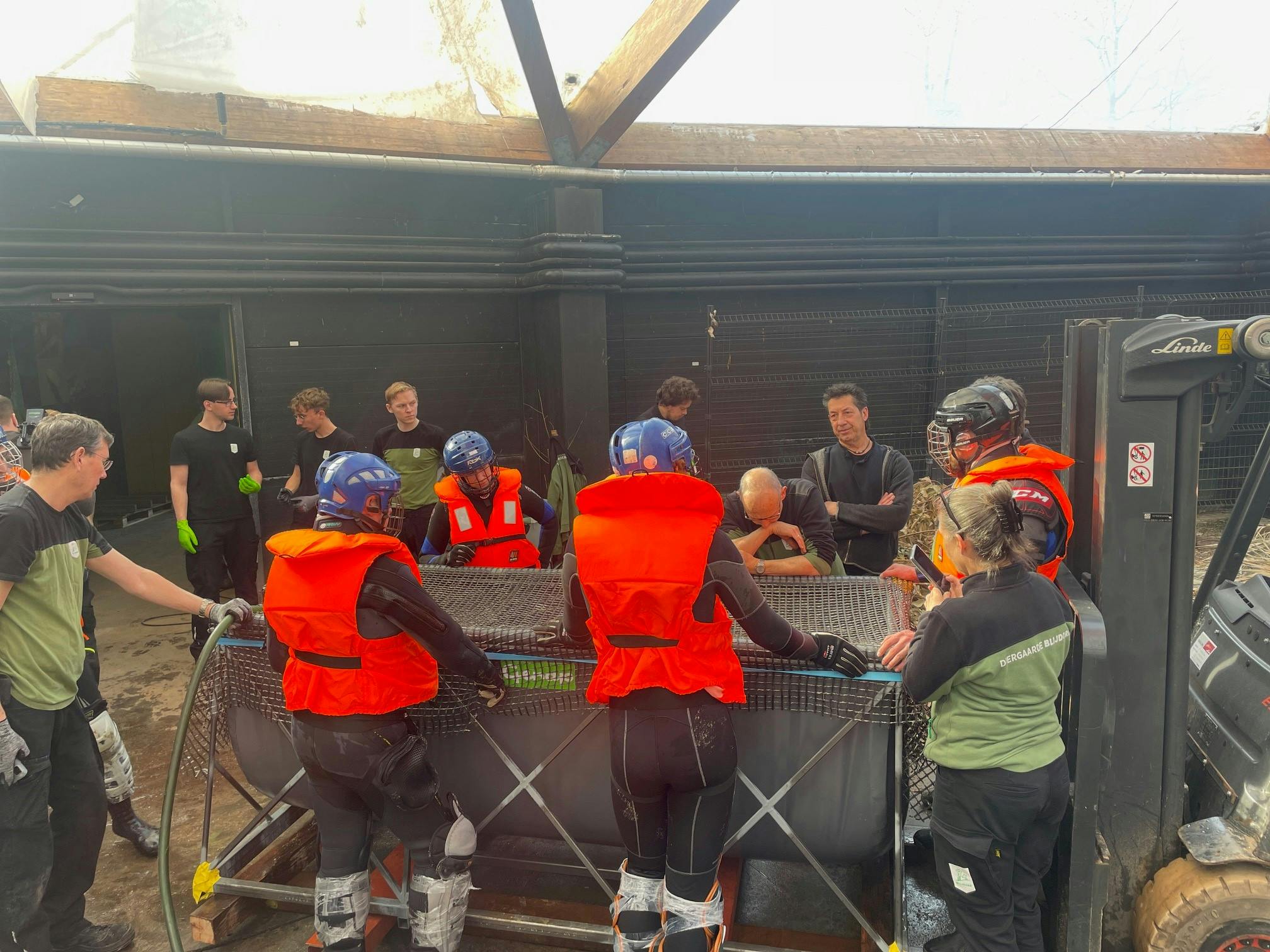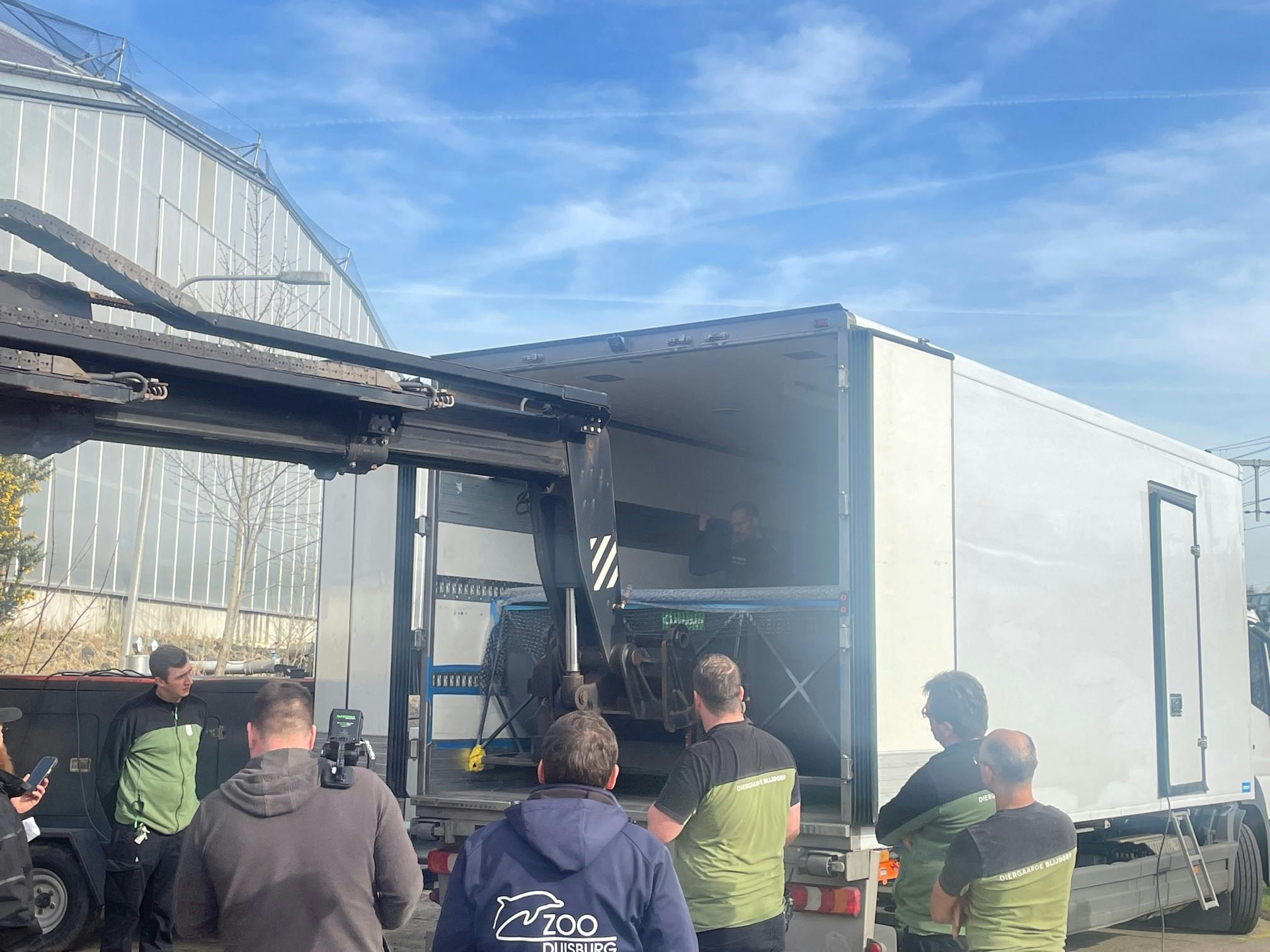

The arapaima is the largest freshwater fish in Latin America. For many years, Diergaarde Blijdorp was home to these prehistoric-looking giant fish. When it became clear that they could no longer stay in the Rotterdam zoo, a unique operation was initiated: transporting the 250 cm long predatory fish to Duisburg Zoo.
Until now, transporting adult arapaimas was considered nearly impossible. Besides their size, the unusual way they breathe posed a problem during transport. These fish not only breathe underwater but also come up regularly to gulp air. Part of the arapaima's swim bladder has evolved into a lung-like organ, meaning they can drown if they swallow water. This is a significant challenge when transporting them over long distances in a tank with sloshing water.
Experts from Rotterdam and Duisburg meticulously prepared for months to transport two adult arapaimas. In consultation with specialized South American colleagues—where the fish is sometimes moved but over shorter distances—they designed a steel frame with a custom-made water-filled hammock. The construction barely fit into the width of a truck, and the innovative aspect was crucial. To prevent water from sloshing, the transport had to be perpendicular to the direction of travel. But first, the fish had to be caught, which was no easy task.

Getting an arapaima into a hammock is no simple feat. It takes six people in ice hockey gear to net the fish. It's essential to avoid the armored head and the wildly thrashing tail, as the powerful fish can cause serious injuries. Once caught, the fish needed to be quickly placed in its hammock. After catching its breath, the steel frame with the 150-kilogram fish was lifted with a forklift and telehandler into a heated truck, where the pre-planned method was finally put into practice.

During the 200-kilometer journey from Rotterdam to Duisburg, the zoos made transport history. Not only was the arapaima likely the largest fish on the highway at that moment, but it was also the first time this species was successfully transported over such a distance in Europe. The fish was checked multiple times during the trip, and each time, the signals were positive to continue the journey.
The tension among the more than 20 people involved in the groundbreaking transport vanished when the arapaima swam out of the tank to explore its new habitat after unloading. Staff from Diergaarde Blijdorp and Duisburg Zoo sat side by side to witness this wonder before returning to Rotterdam. The next day, the second arapaima was loaded. This fish is also currently on display at Duisburg Zoo.
With the acquired knowledge and experience, the zoos have found a method to safely transport this endangered species. Hopefully, this technique will be used worldwide to preserve this majestic fish for future generations and protect it from extinction.